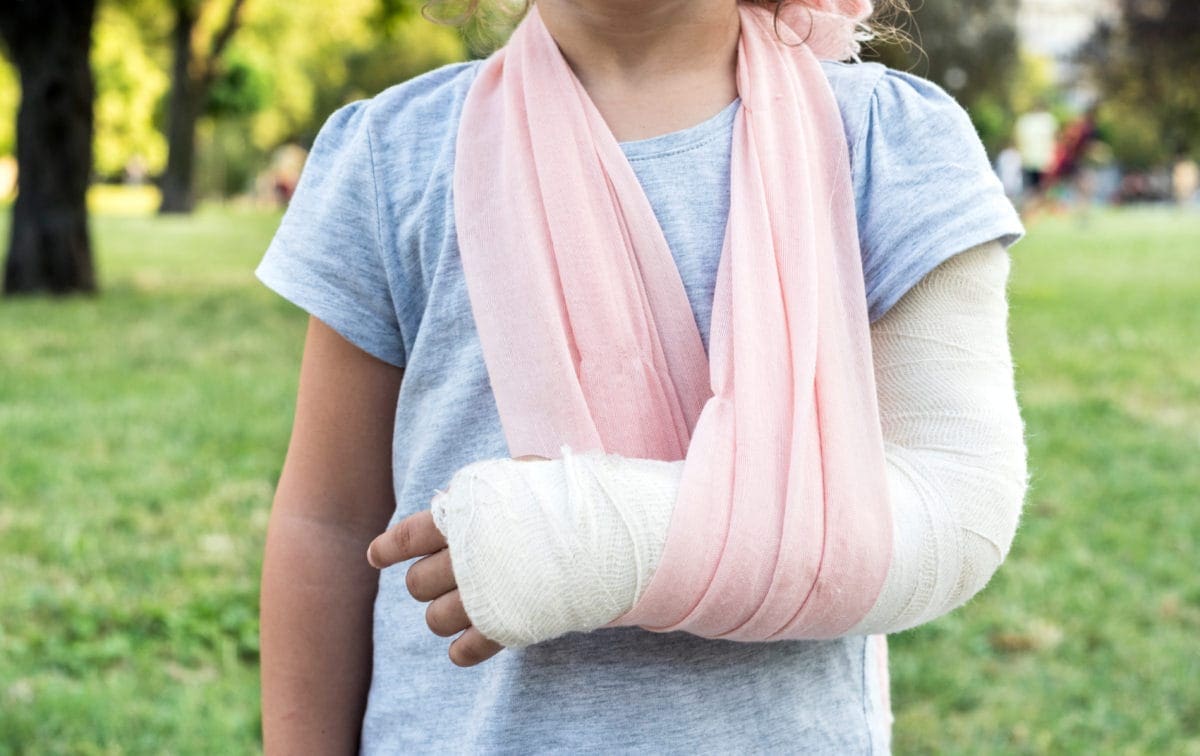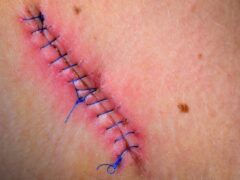As a child, having a cast or splint on a broken arm or leg might seem cool. As an adult, it’s frustrating. Casts and splints are hard wraps used to help a broken bone, torn ligament, tendon, or other tissue heal. Casts and splints relieve some pain and reduce swelling, too. They help it heal by keeping broken ends together and as straight as possible. Casts and splints help keep the injured area from moving. This helps the injury heal faster without risk of repeated injury.
The amount of time you’ll need to wear your cast or splint depends on the type of injury. Also, it depends on the seriousness of the injury. If you keep a cast in good condition, it can stay on for several weeks. Your doctor will tell you when it’s ready to come off. A splint usually stays on for several days to a week. If your injury causes swelling, you may need a splint until the swelling goes away. You may still need a cast after swelling goes down. Also, if your injury is swollen, both splints and casts may need to be adjusted in the first few days. As the swelling goes down, a cast or splint may become too loose. If swelling increases, the splint or cast may become too tight.
Taking the time to practice good cast care at home can make a big difference in your recovery. Watch for signs of infection, avoid activities that could damage the cast, and contact your doctor if you notice anything unusual. Good cast care supports healing—and helps you get back to normal faster.
Casts vs. Splints
Almost all broken bones, injured tendons, and ligaments cause pain. Casts and splints are designed to relieve pain by limiting your movement. Your pain should become less severe each day after getting your cast or splint.
Casts and splints are different, too. Casts are custom-made with fiberglass or plaster. A cast wraps all the way around an injury and can only be removed in the doctor’s office.
What is a Splint?
A splint is like a half cast. The hard part of a splint does not wrap all the way around the injured area like it does with a cast. Instead, there are usually 2 hard areas connected with an elastic bandage or other material that hold the splint in place. Unlike casts, splints can be easily removed or adjusted. Splints can be custom-made from fiberglass or plaster, or they may be ready-made. Splints come in lots of shapes and sizes for different injuries.
With a cast and splint, your pain should become less severe each day after getting it. To relieve discomfort that can occur when you get a cast or splint, raise the cast or splint above your heart. You can do this by propping your arm or leg on pillows (especially in the first 48 hours after you first get the cast). You will have to lie down if the cast is on your leg. This may reduce pain and swelling. Flexing your fingers or wiggling the toes of the affected limb also helps reduced swelling and discomfort.
How to Care for a Cast Properly
- Casts cannot get wet. However, covering your cast with a plastic bag and holding it in place with a rubber band can help keep it dry when bathing and showering. You can also buy a waterproof cast cover. Never swim with a cast.
- The skin inside your cast can get itchy. Do not use makeshift materials to relieve the itch (such as a sharp object or the heat from a hair dryer). Ask your doctor for safe methods to relieve the itch.
- Try to keep the area around the edge of the cast clean and moisturized.
- Wiggle your fingers or toes while wearing a cast or splint. This helps with circulation.
- You can apply ice for 15 to 30 minutes over a cast or splint. However, the ice should be covered to prevent getting the cast or splint wet.
- Ask your doctor whether you can take over-the-counter or prescription pain medicine.
Things to consider
Call your doctor if your pain gets worse after getting the cast or splint. New pain or numbness may mean that the cast or splint is too tight. You should also call your doctor right away if you have new pain that develops in another area (for example, pain in your fingers or forearm if you have a wrist or thumb injury, or pain in your toes or calf if you have an ankle or foot injury).
- Most casts shouldn’t get wet. If you get a cast wet, irritation and infection of the skin could develop. Talk to your doctor about how to care for your cast. If the cast does get wet, you may be able to dry out the inside padding with a hair dryer (use a low heat setting and blow the air through the outside of the cast).
- Check the skin around the cast for irritation, chafing or sores. If your skin itches underneath the cast, don’t slip anything sharp or pointed inside the cast to try and itch the spot. This could damage your skin and you could get an infection.
What to Avoid While Wearing a Cast
- Don’t break off or file down any part of the cast. This could weaken the cast and make it more likely to crack or break. If there is an area of the cast that is uncomfortable, try padding it with a small towel or soft adhesive tape.
- If you have a leg or foot cast, don’t walk on it unless your doctor gives you permission. A cast may not be strong enough to bear weight.
- Avoid getting dirt or sand inside a cast or splint.
- Don’t put powders or deodorants inside your cast or splint.
- Don’t pick at the materials of your cast or splint. A damaged cast or splint is ineffective.
When to Call Your Doctor About Cast Problems
- Check with your doctor if a bad smell is coming from the inside of your cast. This may mean you have an infection.
- See your doctor if you experience bleeding inside the area covered by a cast or splint.
Eventually, your doctor will remove your cast or splint. Your doctor can remove the splint easily by unwrapping it. For casts, your doctor will use a special cast saw and blade that cuts through the outer layer of the cast safely. Never remove the cast yourself or use any cutting material to remove it. You could experience a serious injury to your skin, blood vessels, and injured area.
Questions to ask your doctor
- How is a cast removed?
- Does your injury hurt when the cast is removed?
- Can bacteria grow inside your cast?
- What if I am claustrophobic and a cast bothers me? Is there an alternative?
ADVERTISEMENT
ADVERTISEMENT




